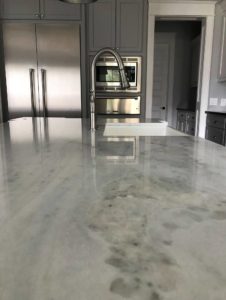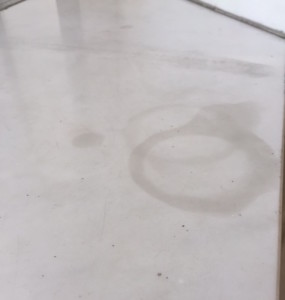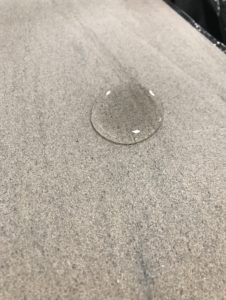Aaaah…the holidays…The time of year where we sit down with our families and eat and eat and eat! My mouth is watering just thinking about. But hold on a minute…what about your marble, limestone, granite, and travertine kitchen countertops?
No doubt your kitchen will get a lot of use over this holiday. In this week’s blog, we are breaking down which holiday food favorites may affect your gorgeous kitchen countertops and giving you advice on how to prevent stains and etch marks.
1. The Problem: Acid Etch Marks
What are acid etch marks?
They are chemical burns on the surface of the stone when something acidic is spilled or comes in contact with the stone. These marks look like the finish or the shine has been removed from the surface of the stone. Sealing stone does not prevent etching.
The Culprits:
Cranberry sauce
Salad dressing
Or in the case of my Sicilian in laws, Tomato pasta sauce
The Solution:
Use cutting boards during food prep.
Try using the Etch Removing Kit for small etch marks or circular ring marks. For larger areas, give International Stoneworks a call, so we can re-hone or re-polish the etch marks from the natural stone surface.
2. The Problem: Alcohol Etch Marks
What are alcohol etch marks?
They are chemical burns on the surface of the stone when something alcohol based is spilled or comes in contact with the stone. These marks look like the finish or the shine has been removed from the surface of the stone. Sealing stone may help if the substance has low-alcohol content and the stone is cleaned quickly. Stronger alcohols will etch stone immediately.
The Culprits:
Wine
Boozy desserts
Cleaning up after cooking using the wrong cleaner
The Solution:
Use cutting boards, coasters and tablecloths.
Use neutral stone cleaners such as Lavenet or Crystal Clean to clean stone surfaces after food prep/cooking.
Use Mean Green if you would like to sanitize stone tops.
Again, International Stoneworks can help remove etch marks from the stone by re-honing or re-polishing the surface.
3. Oils and Grease Stains
What is a stain?
Areas that are stained appear darker in color yet are still smooth to the touch. Oil or grease has penetrated into the pores of the stone and has discolored that area.
The Culprits:
Basting and cutting the turkey
Gravy
Buttery potatoes and cornbread
The Solution:
To help prevent oil stains, we recommend sealing your stone with Seal & Go® S or Seal & Go® W prior to your Thanksgiving cooking session. These stone sealers are penetrating sealers, meaning they go into the pores of the stone and repel non-acid liquids like water, coffee, tea, grease, oil, etc. We recommend re-sealing your stone annually. If you have never sealed your stone before, you may need to apply more than one application of the sealer.
If you want to learn more about how to apply Seal & Go® S or Seal & Go® W, check out our blog post, “Smooth Sealing.”
If you do see oil or grease stains after cooking or your holiday meal, you can try to use a poultice stain remover such as S.A.C. (stain absorbing compound) or Oil & Grease Remover.
Happy Thanksgiving from International Stoneworks, Inc.!



